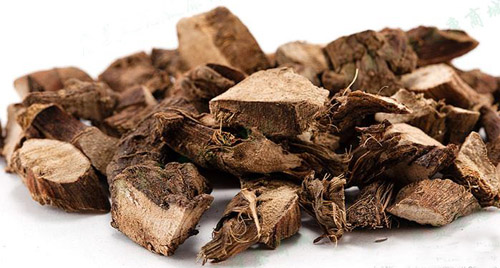The source is from the tuber of the perennial herbage Arisaema Consanguineum Schott, Arisaema amurense Maxim., or Arisaema heterophyllum B1., family Araceae. Tiannanxing (Rhizoma Arisaematis) is mainly produced in the areas of Henan, Hebei, and Sichuan, etc.; Arisaema amurense Maxim. is mainly produced in Northeast China and Arisaema heterophyllum B1. is mainly produced in the areas of Jiangsu, Zhejiang, etc.. The medicinal materials are dug and collected in autumn and winter, the impurity being got rid of, and then dried in the sun, that is, Shengnanxing (Rhizoma Arisaematis, crude). The medicinal herb prepared by soaking it in the alum solution, decocting it together with ginger, cutting it into slices and drying it in the sun is called Zhinanxing ( Rhizoma Arisaematis Praeparata ).
Medicinal Properties: Bitter and pungent in flavor, warm in nature, toxic and attributive to the lung, liver and spleen meridians.
Actions: Eliminate dampness and resolve phlegm, expel wind and relieve spasm, and disperse swelling and arrest pain externally.

Application
1. It is used for chronic phlegm-syndrome with cough and chest distension and distress. Its action of eliminating dampness and resolving phlegm is dominative to that of Banxia (Rhizoma Pinelliae). For stagnation of phlegm-dampness in the lung, it is used every time in combination with Jupi (Pericarpium Citri Tangerinae), Banxia ( Rhizoma Pinelliae ), Fuling ( Poria ), and Zhishi (Fruztus Aurantii Immaturus), etc., such as Daotan Tang (Decoction); for cough of lung-heat type with yellowish and thick sputum, must be used in combination with Huangqin ( Radix ScuteUariae ), Gualou (Fructus Trichosanthis ) and others that clear away lung-heat and resolve phlegm.
2. For dizziness due to wind-phlegm, apoplexy with distortion of the face, epilepsy and tetanus. It dominates to expel wind-phlegm and relieve spasm. For dizziness due to wind-phlegm, it can be used together with Banxia ( Rhizoma Pinelliae ) , Tianma (Rhizoma Gastrodiae ), etc.; for numbness of extremities, hemiplegia and distortion of face due to stagnation of phlegm in the channels, it can be combined with Baifuzi (Rhizoma Typhonii ), Banxia (Rhizoma Pinelliae), and Chuanwu (Radix Aconiti), etc., such as Qingzhou Baiwanzi (Pill); for epilepsy, it can be used together with Yujin (Radix Curcumae ) and Shichangpu ( Rhizoma Acori Graminei ) for that with severe convulsion, Wugong (Scolopendra), Quanxie (Scorpio) and others should be added to; for tetanus, it can be combined with Fangfeng (Radix Saposhnikoviae), Baizhi ( Radix Angelicae Dahuricae ), and Tianma (Rhizoma Gastrodiae), etc.
3. For large carbuncle and subcutaneous nodule with swelling and pain, Shengnanxing (Rhizoma Arisaematis, crude) can be applied on wounded areas and recently, it can be taken orally or used externally on local area to treat cancer, having certain therapeutic effect, especially in cancer of uterine cervix.
Usage and Dosage:
3 - 10 g of prepared Tiannanxing is used in decoction for oral use, or 0.3 - 1 g of that is used in pill or powder, crude Tiannanxing is generally not taken orally. Just right amount of it is for external use.
Notes:
Contraindicated in pregnant women and used with caution in cases with yin deficiency and dry-phlegm.







